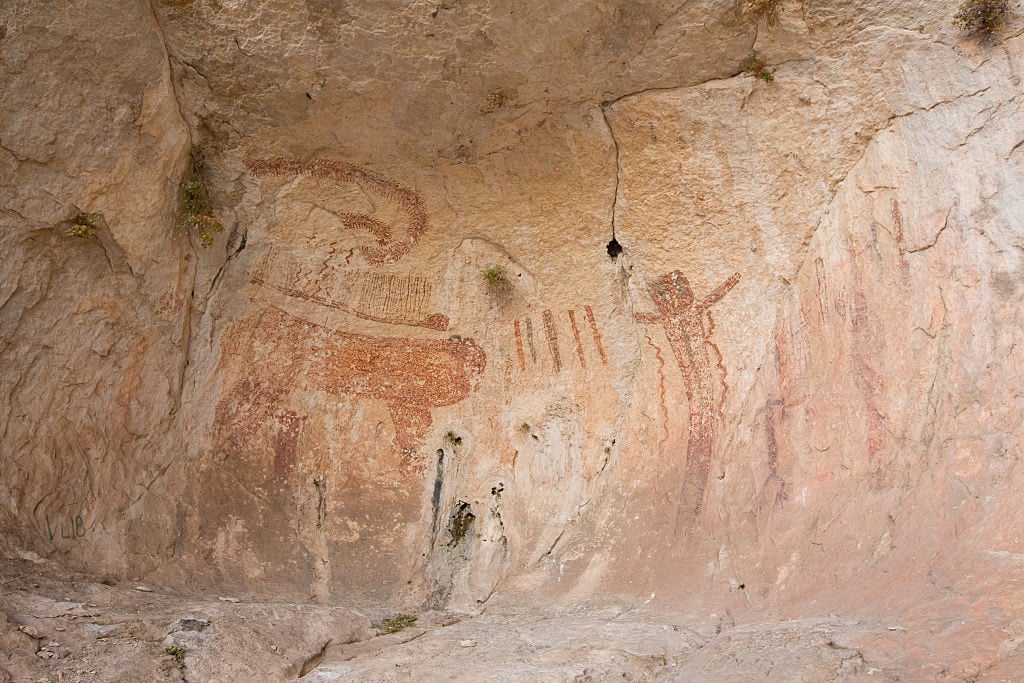Art World
An Innovative X-Ray Technique Is Revealing Secrets About the Ancient Rock Art Near the Rio Grande
The process, developed by an archaeological team in Texas, could provide new insights into prehistoric life.

The process, developed by an archaeological team in Texas, could provide new insights into prehistoric life.

Taylor Dafoe

All works of art tell a story, especially those that have survived thousands of years. Now, in an effort to understand the stories behind some of the country’s oldest examples of prehistoric rock art, researchers are turning to an innovative x-ray technique, according to an article by the American Chemical Society.
Today at the American Chemical Society’s national meeting, a team of scientists from the Shumla Archaeological Research and Education Center in south Texas is presenting the results of a recent study conducted using portable X-ray fluorescence spectroscopy. This technique, used across a variety of fields, employs a handheld X-ray instrument that measures the fluorescent X-rays emitted from a sample excited by a primary X-ray source. In short, it determines the elemental composition of an object.
For the Shumla researchers, it provides a picture of the makeup and history of hundreds of ancient pictographs—and, hopefully, an insight into the way prehistoric societies operated as well.
“It gives you the elemental analysis of a specific material, and is the first step in figuring out how ancient artists used different materials to make their paintings,” Karen Steelman, the Shumla scientist who led the study, told phys.org.
The Shumla team conducted tests at 138 sites across Texas’s Rattlesnake Canyon, which is home to hundreds of pictographs in the Lower Pecos archeological region along the Rio Grande. With their new technique, they were able to discern the elemental makeup of the pigments used and the history and patterns of application. That is, they learned how these prehistoric artists made their materials, and gained insights into the process by which they implemented them.

The “Curly Tail Panther” Indian rock art painting done in the Lower Pecos River style about 4,000 years ago, at Devil’s River on the Texas-Mexico border. Photo: Robert Daemmrich Photography Inc/Corbis via Getty Images.
For instance, the portable X-ray fluorescence measurements revealed unseen black pigments, made from manganese, underneath layers of red paint from iron oxide, revealing older paintings from the hunter-gatherer societies that inhabited the area from 2500 BCE to 500 CE. The Shumla team also found trace evidence of gunshot damage on the rocks, likely dating back to the early 1900s. The damage, although unfortunate, might aide the researchers in petitioning the state government for additional funds or conservation measures.
Whereas older methods of analysis necessitated sampling bits of a rock’s surface, effectively damaging the object they mean to study and conserve, the portable X-ray fluorescence spectroscopy technique allows for non-destructive investigation. The development mirrors those that are taking place in more traditional fields of art conservation as they transition to more non-invasive methods such as X-ray and spectral imaging.
The Lower Pecos pictographs, painted between 4,000 and 1,000 years ago, are often referred to as the “oldest books in North America.” Further learning of their history and composition would provide a key insight into the intelligence, beliefs, and migration patterns of prehistoric humans who lived in the area.